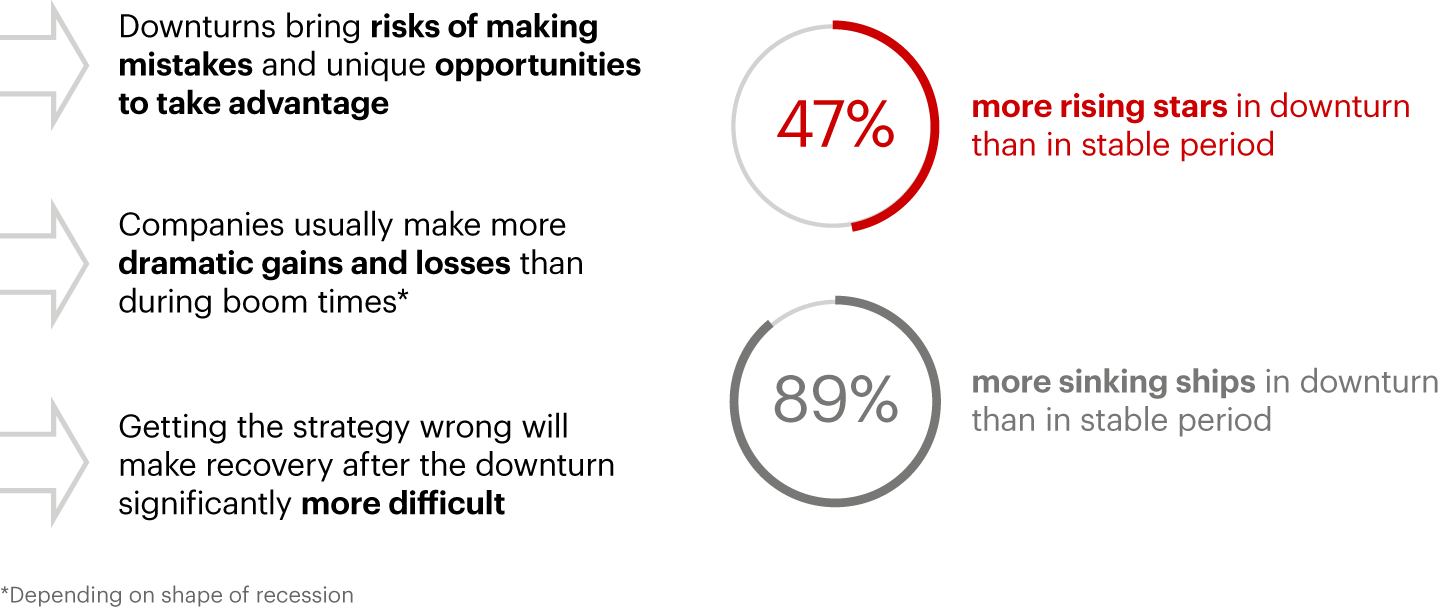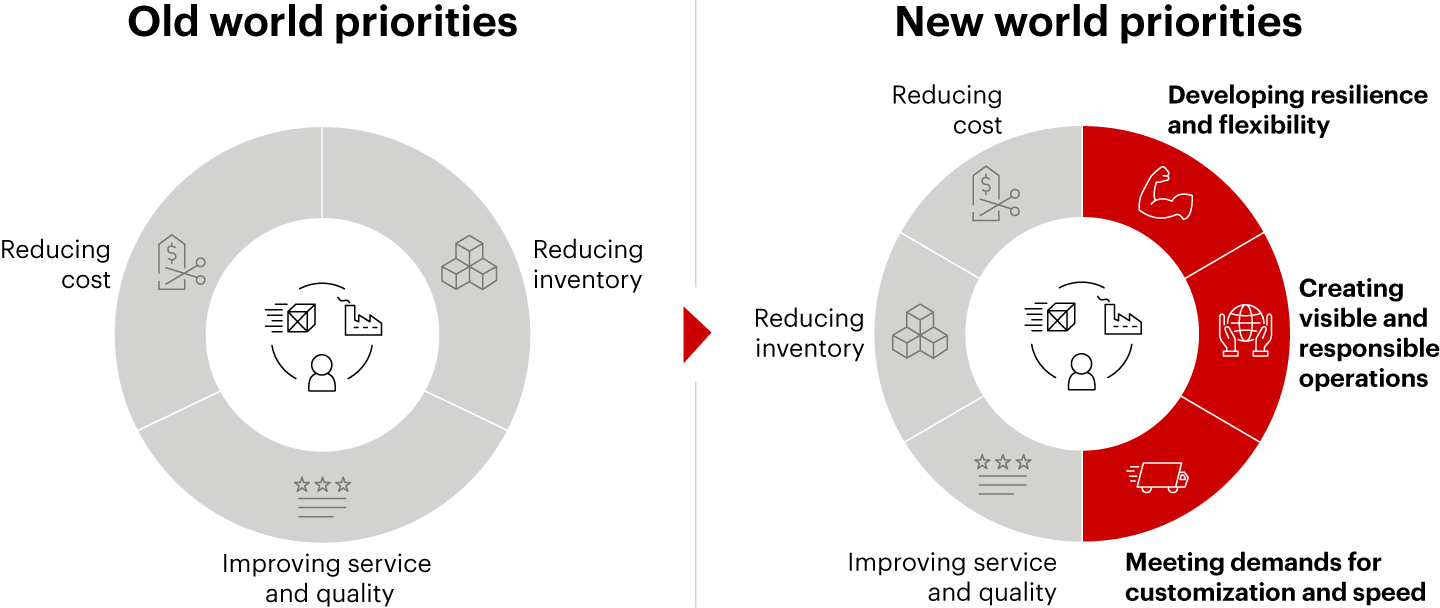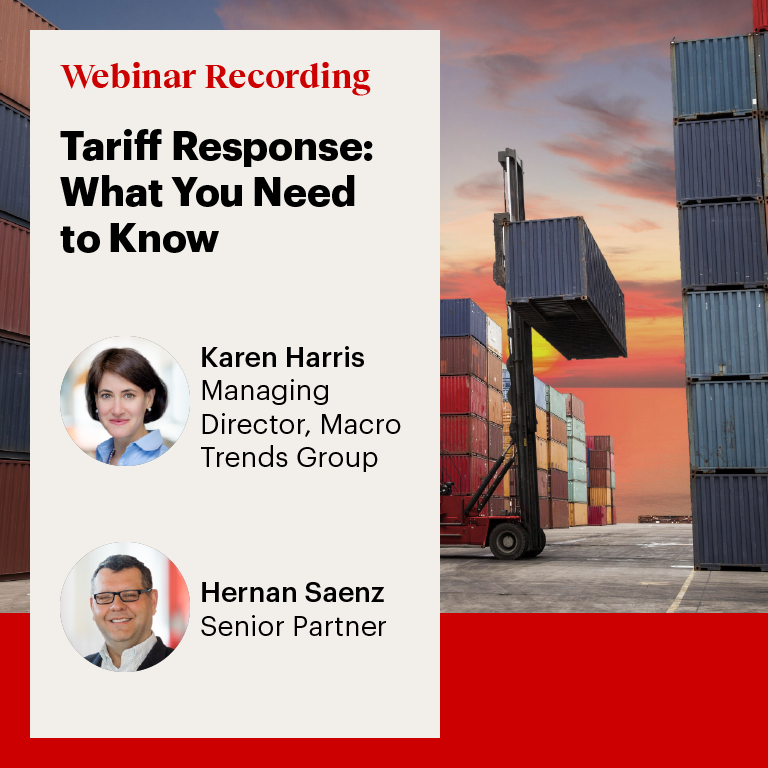Brief

As global markets convulse under the pressure of gyrating tariffs and geopolitical uncertainty, the temptation is to wait for clarity. But some leading companies aren’t standing still—they’re making bold, informed bets. Here are four actions they are taking now: mapping exposure, benchmarking competitively, rethinking cost, and reinventing supply chains.
1. Map Your Exposure
In a deeply interconnected world, supply chains stretch across continents and industry tiers. Understanding true exposure isn’t simple, but it’s foundational. The key lies in identifying not just where your dependencies are but also how they cascade across suppliers and geographies. And, of course, it requires a dynamic model—uncertainty will wax and wane, but it is now a permanent feature of trade.
That model starts with costs, since tariffs increase costs. But they don’t do so in a uniform way. Costs depend on componentry, flow, country, and so on—and those dependencies will affect each product differently.
Demand is an equally important variable. Who will have to bear those costs? You? Your suppliers? Your customers? Product demand modeling can help you understand the demand elasticity of your different customer segments, giving you a better sense of your full exposure.
At this point, every company also is examining its exposure to international suppliers and looking at the tariff rates applied to those countries. But for many, that doesn’t dig deep enough. Companies also have domestic suppliers with international Tier-2 country exposure (not to mention domestic suppliers with little or no exposure that will nonetheless use the tariff regime to opportunistically raise prices).
Most companies built additional flexibility into their existing supply chain structures in response to Covid-19. That means they now have a lot of levers they can pull to manage their exposure through their supply chain—whether it’s inventory levels, plant uptime, “make vs. buy” decisions, or shifts in logistics and inventory operations. In our work with clients that have two sources of supply for the same product, we’ve seen the tariff regime create very different economics for the same products simply because of different flows.
Most companies built additional flexibility into their existing supply chain structures in response to Covid-19. That means they now have a lot of levers they can pull to manage their exposure
Finally, the demand modeling mentioned above offers a key input into understanding how pricing actions can affect exposure. Is your margin exposed (because your market won’t accept higher prices)? Or is it your sales (because you can raise prices, but must accept some elasticity of demand)? In our work, we see the smartest companies taking an incredibly surgical approach that treats pricing not as a binary question but as a segmentation question. They look at each segment, from the most important customers to the long tail, examining where the revenue is, the exposure, and the pricing needed to maintain margins.
Ultimately, playing defense requires both levers: the supply lever and the pricing lever.
2. Benchmark Competitively
But absolute exposure tells only part of the story—and playing defense is only part of the game. What matters most is your position relative to the competition. Companies with lower exposure have the opportunity to go on offense while others remain reactive—and playing offense during times of turbulence usually has extraordinary benefits.
Bain’s research consistently shows that companies win or lose the greatest share during periods of turbulence and uncertainty—either because they make mistakes or stay on the sidelines. Crises produce more rising stars and more sinking ships (see Figure 1).


Notes: Includes US S&P 500–listed companies with annual revenue of more than $2 billion; downturn period defined as December 2007 through December 2014 and stable period as December 2014 through December 2017; companies were divided into quartiles based on operating margin percentage within S&P industry sector; rising stars moved from bottom quartile to top half between beginning and end of period; sinking ships moved from top quartile to bottom half
Source: S&P Capital IQHow do you play offense? You model your exposure relative to your competitors. All of the above exercises that companies do for their own supply chain, they also need to do for direct competitors. Understanding the magnitude of exposure your competitors have by supplier and by product and the extent to which they can mitigate it is crucial.
Think, for example, of the US automotive industry. The fundamental exposures are so different across the different players that you’d hardly believe they’re all in the same sector. If your industry is like that and you can identify areas where your company is less exposed, you have an interesting opportunity to compete on price for price-sensitive segments and gain share. And for less sensitive segments, you might be able to match industry pricing as it goes up and create a reserve of money for investment.
3. Rethink Cost
Another way to play offense is to take costs out now. The shift from globalization to regionalization is eroding economies of scale. As structural costs rise, the advantages of being a cost leader become more pronounced.
As structural costs rise, the advantages of being a cost leader become more pronounced.
Leading companies are simplifying (just as they did during Covid-19) to focus on the customer value proposition while reducing complexity in product lineups, processes, and organizations. Technology plays a crucial role in creating lean operations that can flex with uncertainty. Automation, machine learning, traditional AI, and generative AI are already reshaping the relationship between revenue and cost lines. And those technologies also create visibility and transparency that allow companies to make decisions their competitors cannot, enhancing resilience and flexibility. That’s the definition of competitive advantage.
One caveat: In the past, companies typically reduced costs by benchmarking and creating top-down targets. The result: Costs came creeping back in within a couple of years. In a structurally more expensive world, those costs need to come out permanently. Companies that want to achieve that need to redesign their ways of working from scratch using zero-basing techniques and embedding cost discipline into the tools and culture of the organization.
4. Reinvent Supply Chains
Today’s supply chains (still long, opaque, and inflexible despite pandemic-era improvements) are misaligned with tomorrow’s demands. Smart companies are proactively redesigning their footprints, aiming for resilience, agility, and strategic control.
The world of operations has shifted from the predictable and algorithmic approach in which economic order quantity was used to decide where to locate inventories with the stroke of a computer key. Today, companies need their supply chains to meet a host of complex demands from customers by investing in resilience, flexibility, traceability, and circularity (see Figure 2).


Until recently, supply chains operated with enormous efficiency at a global scale. Now, companies need to achieve scale and economics at a regional or local level. The supply chain you need (and can afford) will not be perfect; it will be adaptable. The priorities of the old world won’t disappear, but they must be balanced against the realities of the world we’re in today. And the tough trade-off decisions will be made by business leaders, not algorithms.

Tariff Response: What You Need to Know
Bain's Karen Harris and Hernan Saenz discuss the lasting impact of tariffs, what leading companies are doing to adapt, and the strategic moves to make for success.